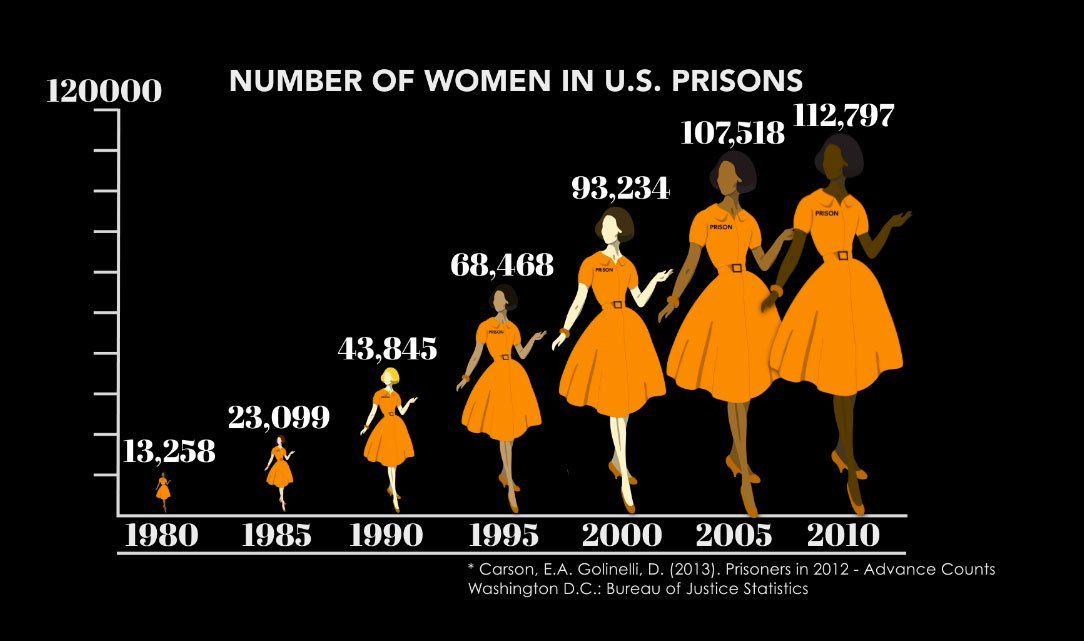Female Incarceration Rates in the United States
Nearly 90% of women jailed for killing men were battered by those men

Of the 200,000 plus women incarcerated in the United States, two-thirds are behind bars for a nonviolent offense, typically drug or property offenses. In the last 25 years, the number of women and girls caught in the criminal justice system has skyrocketed; many were swept up in the ill-conceived "War on Drugs" and subject to increasingly punitive sentencing policies for nonviolent offenders.
In addition to the number of women behind bars, more than one million women are on probation and parole. Many of these women struggle with substance abuse, mental illness, and histories of physical and sexual abuse. Few get the services they need. The toll on women, girls, and their families is devastating.
For those women incarcerated for homicide, many acted in self-defense against abusive partners. Crystal Wheeler served 26 years for killing her husband, who had beaten her repeatedly and threatened her with a gun (as well as his employer). Inside a California prison, she met Brenda Clubine who refused a plea bargain, adamant she had defended her life at the time she killed her estranged husband, who broke her bones, fractured her skull, had 11 restraining orders and a warrant for his arrest. Clubine founded the first inmate abuse support group in the nation, Convicted Women Against Abuse, in 1989. Due to the efforts of CWAA, “Battered Woman Syndrome” (now called “Intimate partner abuse”) became an accepted defense in California in 1992.
Medical care in women’s prisons is often sub-standard, if not outright deplorable. Thirty-seven states will not tell pregnant inmates their due dates to prevent them from escaping, according to the Sentencing Project. The same number allows inmates to be shackled during labor and delivery. Several states have documented histories of performing forced sterilizations, a practice that critics say targeted inmates who were seen as being at risk of serving a future jail term.
Behind bars, women are at risk of sexual coercion at the hands of guards. Although they make up only seven percent of the state and prison population, women account for 33 percent of staff-on-inmate victims, according to the Bureau of Justice. In 2015 the Department of Justice investigating Alabama’s Tutwiler Prison for Women, found that more than one-third of prison staff – 36 of 99 employees – had sex with inmates.
Girls in juvenile detention are even more vulnerable. The vast majority have suffered sexual or physical abuse at home and their health statistics behind bars are particularly grim: 41 percent have signs of vaginal injury consistent with sexual assault; up to a third have been, or are currently, pregnant, and eight percent have tested positive for tuberculosis, according to the National Girls Health and Justice Institute.










